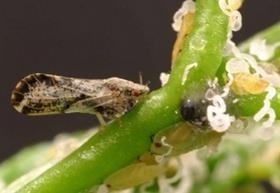
The US Department of Agriculture's (USDA) National Institute of Food and Agriculture (NIFA) has announced four grants totaling more than US$13.6m to combat citrus greening disease, also known as Huanglongbing.
The funding is made possible through NIFA's Specialty Crop Research Initiative (SCRI) Citrus Disease Research and Extension Program, authorized by the 2014 Farm Bill.
'The economic impact of citrus greening disease is measured in the billions,' said NIFA director Sonny Ramaswamy. 'NIFA investments in research are critical measures to help the citrus industry survive and thrive, and to encourage growers to replant with confidence.'
Huanglongbing (HLB) is currently the most devastating citrus disease worldwide. HLB was first detected in Florida in 2005 and has since affected all of Florida's citrus-producing areas leading to a 75 per cent decline in Florida's US$9bn citrus industry.
Fifteen US States or territories are under full or partial quarantine due to the presence of the Asian citrus psyllid (ACP), a vector for HLB.
Since 2009, USDA has invested more than US$400m to address citrus greening, including more than US$57m through the Citrus Disease Research and Extension Program since 2014.
Awards for grant applications submitted in FY 2016 include US$4.27m to Clemson University, Clemson, South Carolina, US$5.1m to Regents of the University of California, Riverside, California, US$2.48m to Iowa State University, Ames, Iowa, and US$1.82m to the USDA Agricultural Research Service (ARS), Athens, Georgia.
Funded projects include Clemson University researchers using naturally HLB-resistant citrus trees to develop new resistant varieties using the CRISPR-Cas9 genome editing tool.
The Regents of the University of California project will design and identify HLB bactericides based on both natural and nanotechnology approaches.
Researchers at Iowa State University will investigate the use of sustainable, naturally occurring soil bacteria to control ACP, and the ARS project will identify and assess the effectiveness and economic viability of chemotherapy treatment options.






No comments yet